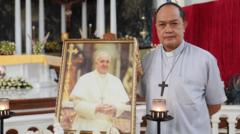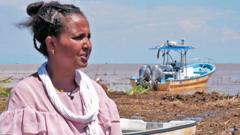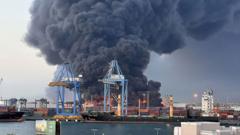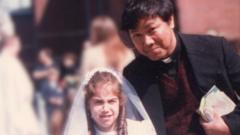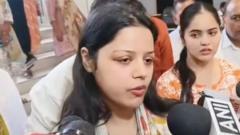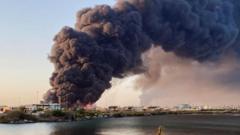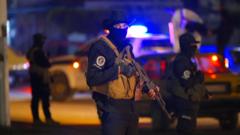Amid the backdrop of Syria’s civil war, the newly-established Syrian Identification Centre embarks on the arduous task of identifying remains from mass graves. With limited resources and funding, medics face the daunting challenge of reconciling families with their lost loved ones, while many continue to search for closure in a country still grappling with the consequences of a long conflict.
The Long Road to Closure: Identifying Victims from Syria's Mass Graves
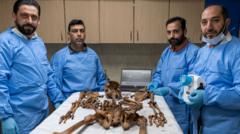
The Long Road to Closure: Identifying Victims from Syria's Mass Graves
In the aftermath of Syria's civil war, medics work tirelessly to identify remains from mass graves, bringing hope for justice to grieving families.
The civil war in Syria has left a devastating legacy, with hundreds of thousands reported dead and many more missing. Dr. Anas al-Hourani, head of the newly-formed Syrian Identification Centre in Damascus, describes the grim reality of identifying victims from mass graves. These graves, filled with layers of bodies, hold the remains of many who fell victim to the haunting violence of previous regimes, dating back decades.
The ongoing task of identification begins with a visual inspection of remains, including femurs meticulously arranged on tables. While forensic odontologists like Dr. al-Hourani can glean certain details, the gold standard—DNA testing—remains inaccessible due to a lack of resources and the impact of international sanctions. Medics confirm that only one DNA lab exists in the country for tests that are both costly and limited in their effectiveness, relying entirely on funding from the International Committee of the Red Cross.
The new leadership, a coalition of Islamist rebels, has made "transitional justice" a priority, yet many families who lost relatives remain skeptical of these promises, yearning for tangible progress as they seek answers regarding their missing loved ones. Estimates suggest over 130,000 individuals were forcibly disappeared during the conflict, with identification processes expected to take many years.
Eleven mixed mass graves sit near a hilltop outside Damascus, now filled with the echoes of stories untold. Some bear witness to the horrors of the past, like Abu Ali, a former military truck driver, who regularly transported loads of civilian corpses. He recounted the routine of delivering bodies to burial sites, marked by horror and silence. "I would just walk away and look at the stars," he recalled, trying to escape the grim reality.
Malak Aoude, a mother whose two sons were among those disappeared during the conflict, embodies the pain that still grips many families. After years of searching for answers, she discovers a glimmer of hope—but also a reminder of despair. The headteacher at her son’s former school reveals he was officially recorded as absent without further explanation, a grim testament to the state’s brutality. Her brief glimpse into bureaucratic acknowledgment only deepens her anguish.
As the pain of loss weaves through the fabric of Syrian society, the work at the Syrian Identification Centre offers a bittersweet hope for closure. Through painstaking efforts to piece together lost lives, the struggle continues to hold influential figures accountable for the atrocities committed. Yet, for many, the path to healing remains long and fraught with obstacles, as justice and answers are desperately sought in the shadows of a war that reshaped an entire nation.

